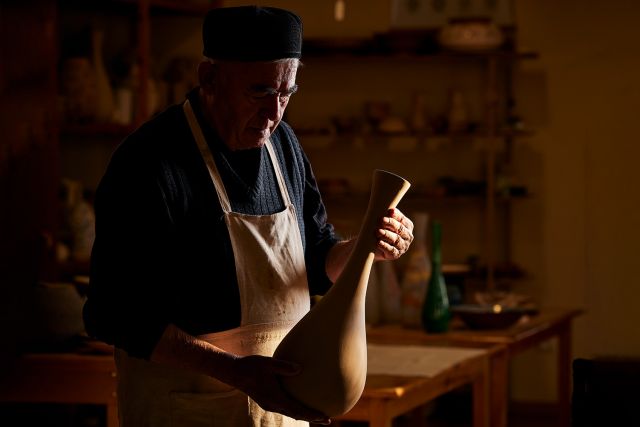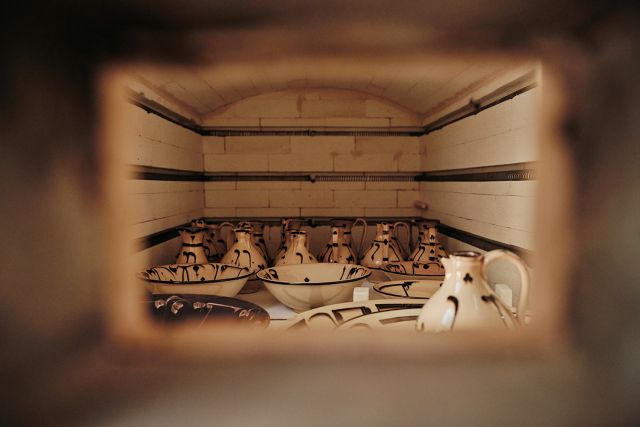This round tray was made with the double-carving technique which creates a 3D-volume effect. In the middle of the tray the symbols of moon and sun have been handcarved.
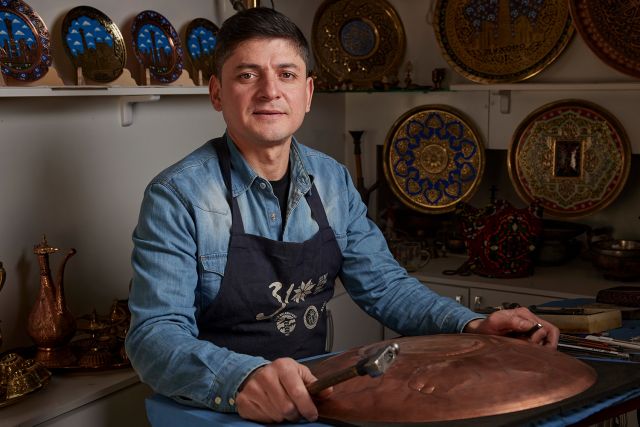
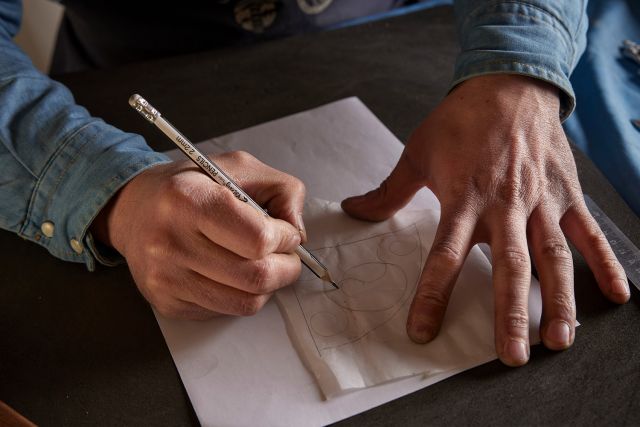
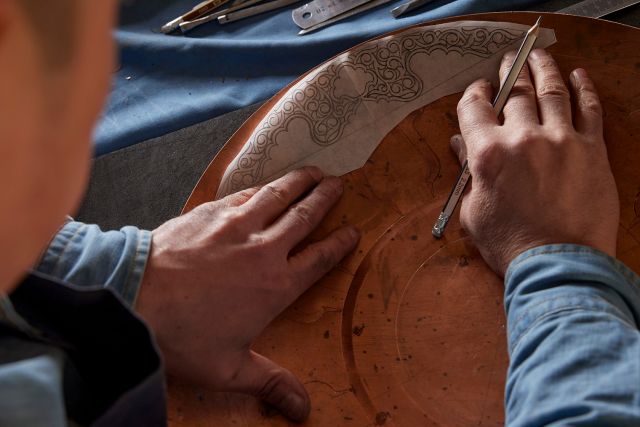
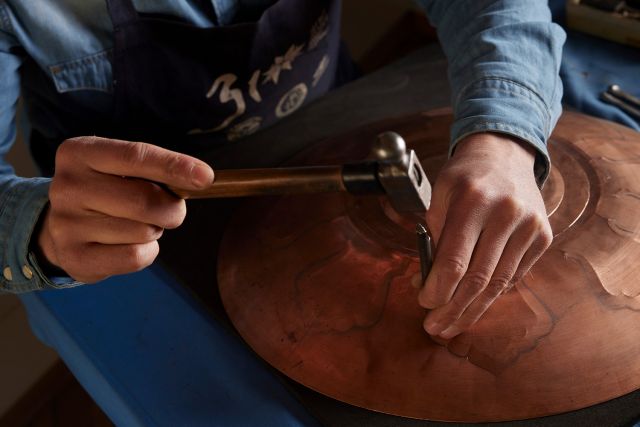
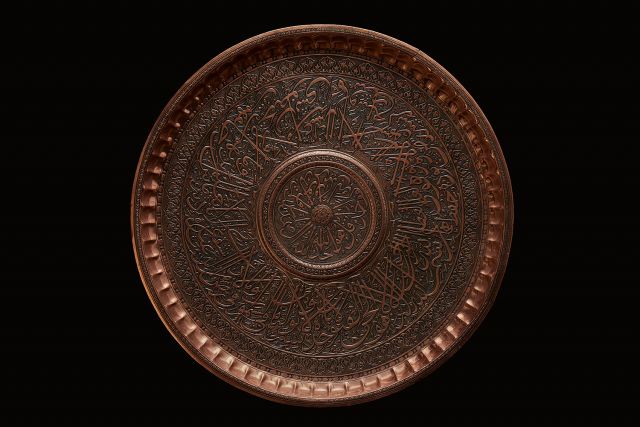
Jurabek Sidikov
- Karavan Saray Sayfiddin
- Coppersmith
- Bukhara, Uzbekistan
- Master Artisan
- Recommended by The Art and Culture Development Foundation
Chupboz 99, 100 Bukhara, Uzbekistan
Daily 08:00 - 22:00
+998 902988733
The intricate art of embossing
- • Jurabek creates unique patterns in the local tradition of Bukhara
- • He has inherited of this ancient craft from his mother
- • He often depicts flowers that grow in his native region
Jurabek Sidikov took up embossing from his mother, who practised it herself. Conscious of her young boy's desire to study this ancient craft, she brought him to master Rakhmat Ruziev who taught him everything. Jurabek learned how to work with different metals and different tools, how to develop patterns and how to use them for different types of finished works. Today he creates various objects, from decorative panels to vessels, trays and jewellery. He covers them with traditional abstract ornaments, floral patterns, ayahs, figurative images. Jurabek says that some of the ideas for future work come to him in his dreams – and he follows these visions, trusting that they come to him from the richness of life.
Read the full interviewWorks
Photo: ©Andrey Arakelyan

Photo: ©Andrey Arakelyan
This panel depicts the image of the great commander Tamerlane, or Timur. The main techniques used are embossing, carving and the volume effect.

Photo: ©Andrey Arakelyan
This rectangular tray is embossed from brass with a single deep carving technique, creating a decorative pattern.

Photo: ©Andrey Arakelyan
This bowl is called kosa in Uzbek and is the traditional serving dish used for soups, broths and other meals. It has a lid and the whole bowl is carved with the volume effect, creating the impression of a scaly surface.

Photo: ©Andrey Arakelyan
This set consists of a teapot for pouring water or tea, and small pialas, which are traditional Uzbek cups for drinking tea, mainly. The techniques used are patterned carving and embossing.





